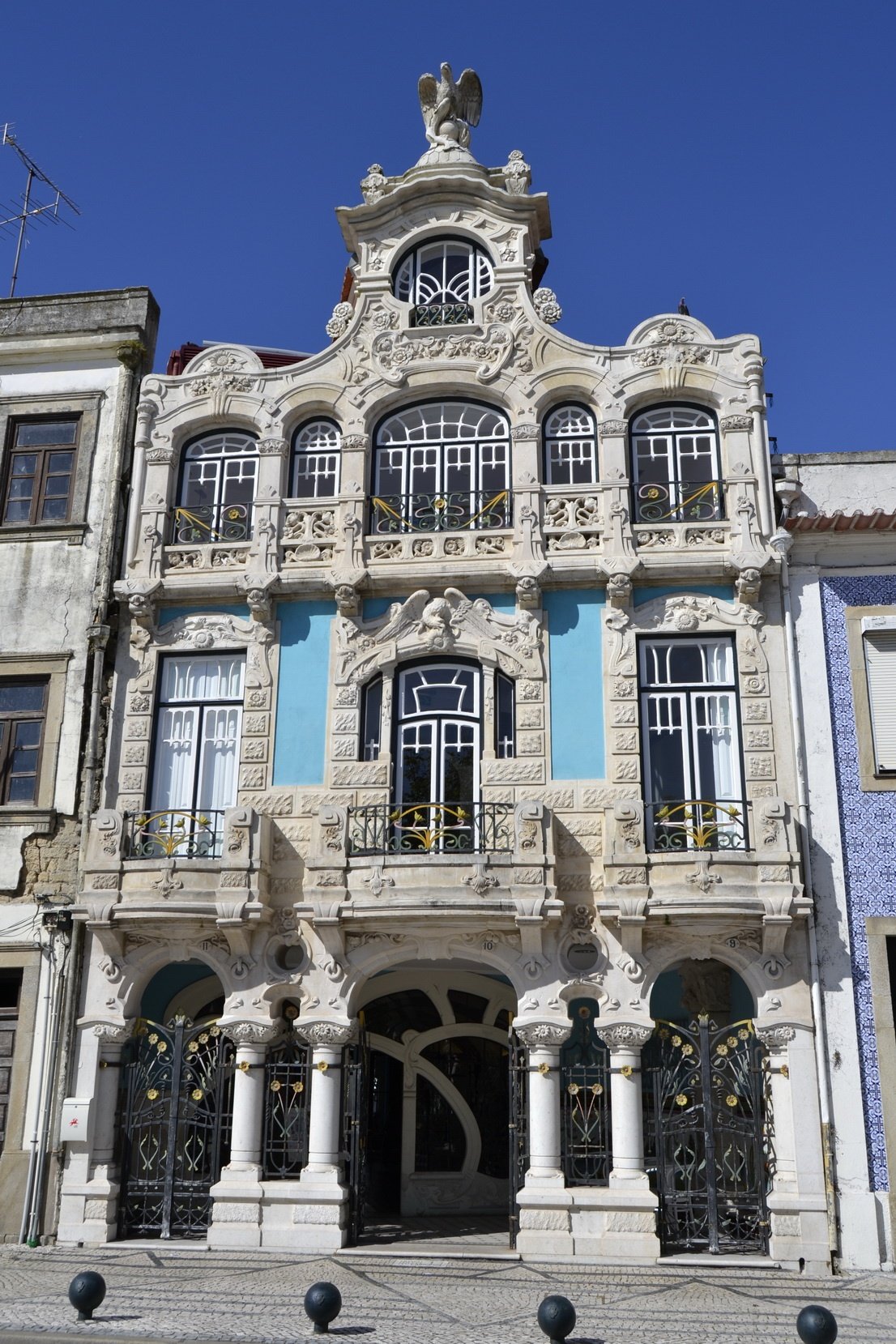#4582. Portuguese Art Nouveau Facade: A Synthesis of National Traditions and European Modernism
Before us stands an outstanding example of Art Nouveau architecture, located, judging by the characteristic details and blue ceramic cladding, in Portugal. The building's facade presents an exquisite combination of fluid forms with rich decorative ornamentation. Particular attention is drawn to the upper part of the facade, crowned with a sculpture of an eagle with outstretched wings, giving the structure a majestic, monumental character.
The facade has a three-part vertical division. The lower tier is designed as an arcade with elegant wrought iron gates and decorative elements. The central tier is characterized by a combination of blue panels and light-colored stone, creating a striking contrast. The second-floor windows have a rectangular shape with decorative framing, complemented by elegant balconies with wrought iron railings featuring golden accents.
The upper tier of the facade is particularly expressive thanks to the curvilinear parapet with rich stucco work, behind which wide windows with Art Nouveau-characteristic frame patterns are located. The central window of the third floor has an arched shape and is framed by lush decoration, including plant and floral motifs. All decorative elements of the facade – from stucco to ironwork – demonstrate virtuoso craftsmanship and an understanding of Art Nouveau aesthetics with its gravitation toward natural forms, asymmetry, and plasticity.
The building is a vivid example of Portuguese Art Nouveau from the early 20th century, when this style was flourishing in European architecture. Particularly noteworthy is the combination of elements traditional to Portugal (such as blue ceramic panels reminiscent of azulejo) with pan-European trends of the Art Nouveau style.
